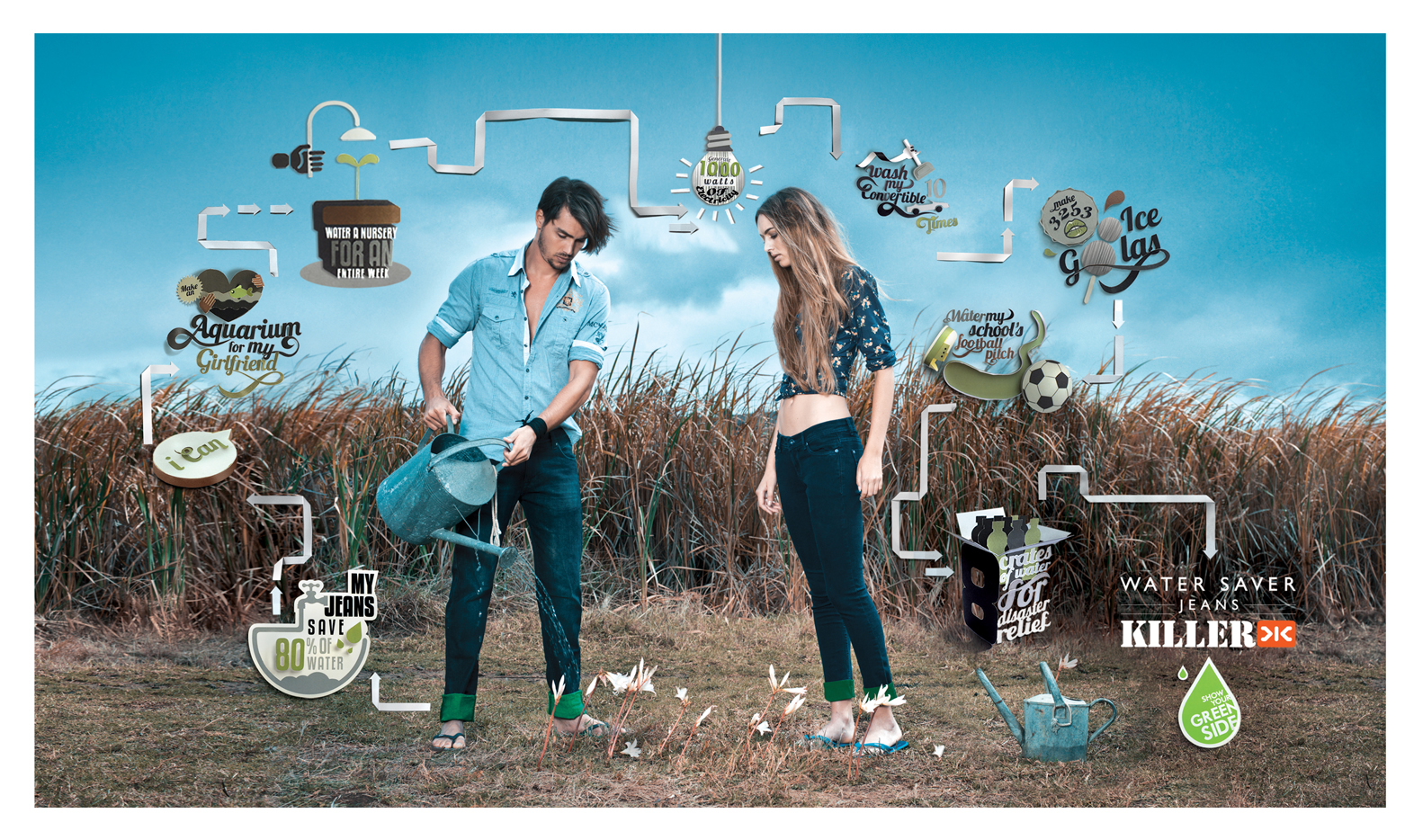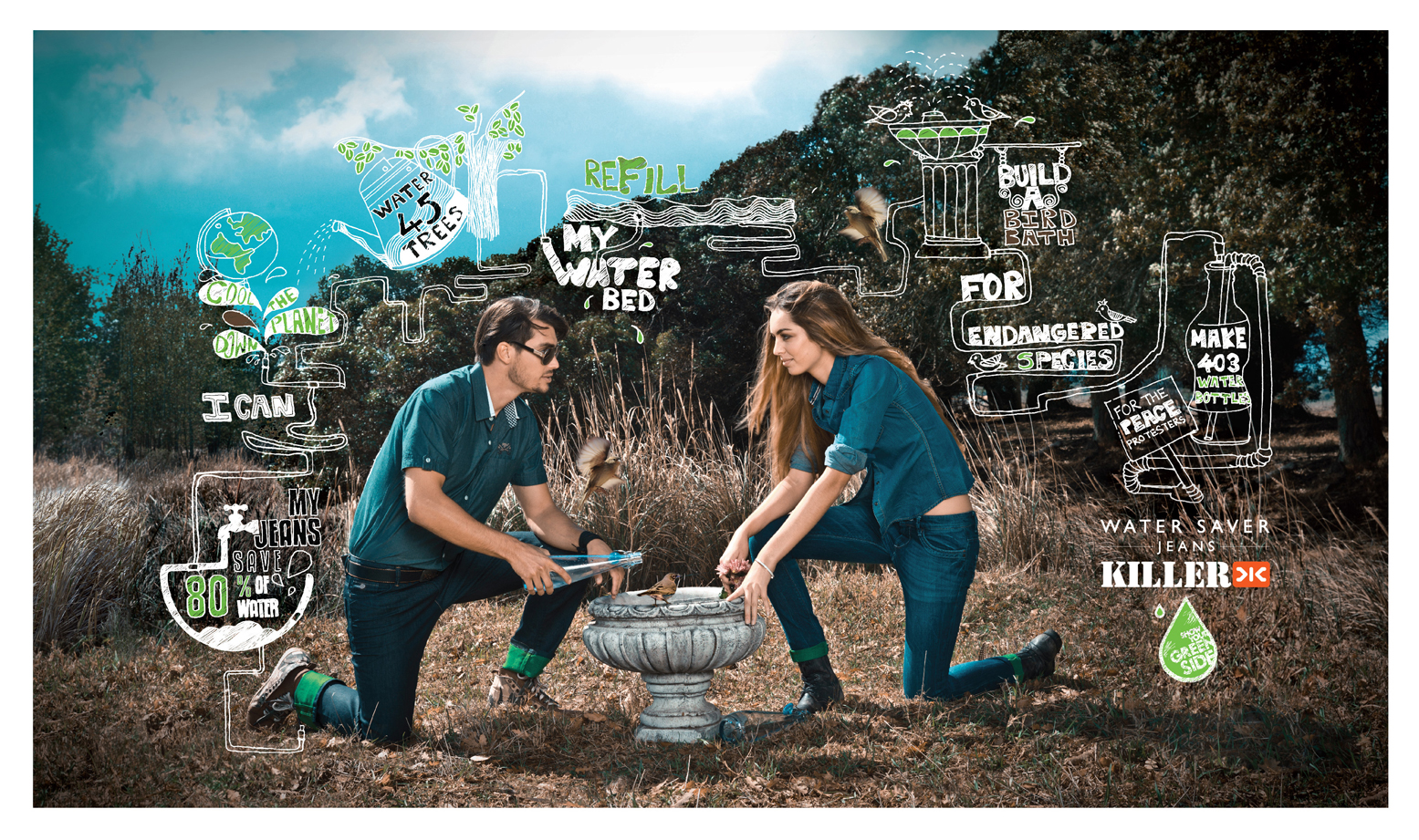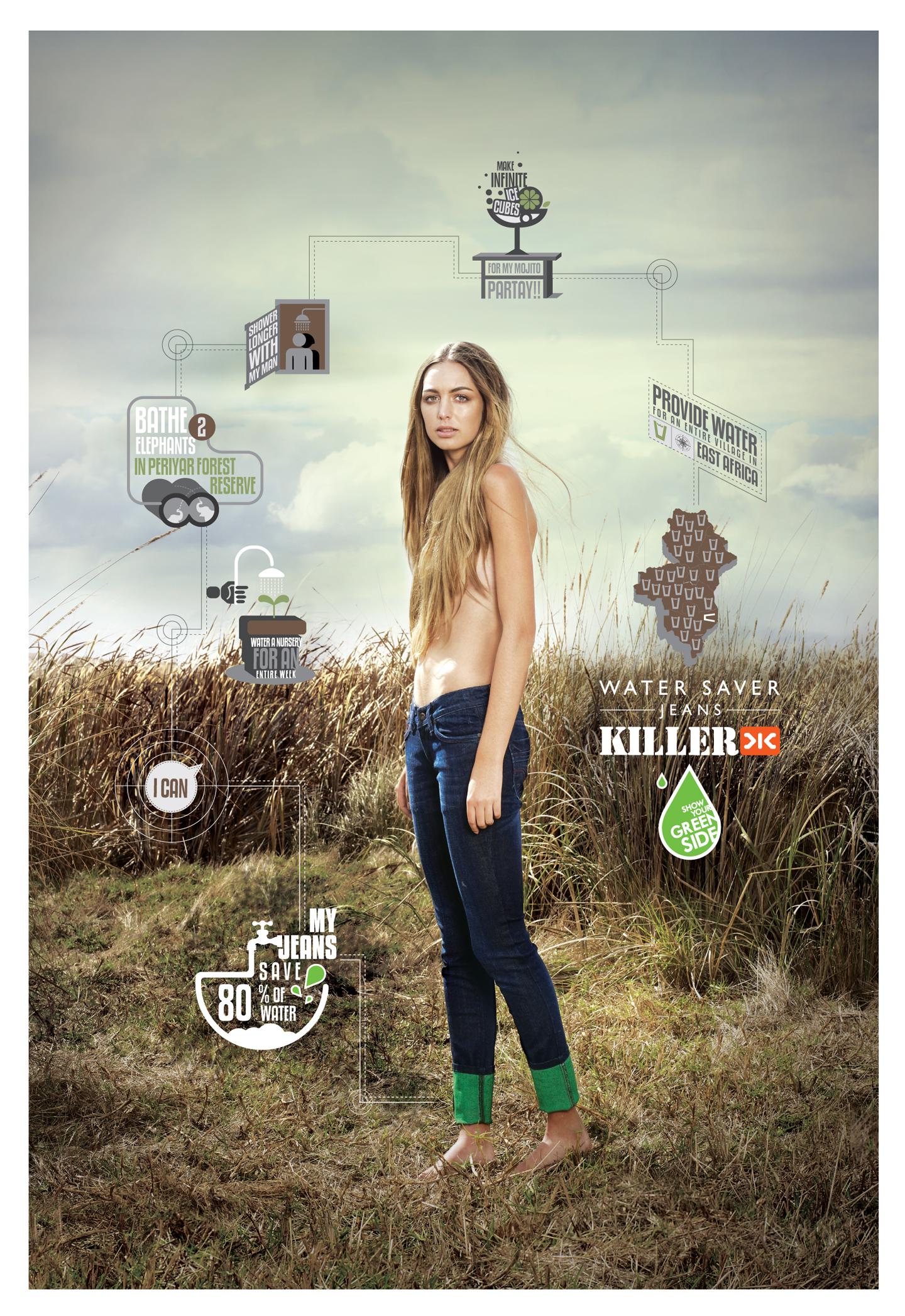Killer has launched a collection of 'water saver denims'. The claim is that it took 80 per cent less water to manufacture each 'water saver' pair.
A TVC for the collection created by Grey, shot in Prague, shows a bevy of youth protesting for the cause of saving water and water bodies. To check the protest, a general and his brigade attack them with water cannons. While everybody goes down, one young man walks to the centre of the protest, taking on the water attack. He bends down and folds his denims, revealing a green fold. The moment the green fold appears, the cannons stop spewing water. The general even takes charge of a cannon himself, but in vain. A super urges all to fold up their jeans and ‘show their green side', thereby introducing ‘water saver denims’ from Killer.
Amit Akali, national creative director and executive vice president, Grey India, said, "The client wanted film and print that would bring the ‘water saving’ aspect of the jeans alive. Instead of just thinking film and print, we came up with a product design idea. We sent the jeans back to the factory. The client agreed to dye each pair of water savers green on the inside. So that when you folded them up, as people generally fold their jeans, you got a distinct green fold and not the usual blue one. The ‘green fold’ was a live status update of the wearers' love for the environment. It proclaimed that the wearer had saved 100 liters of water."
Akali explained that the TVC was built on the insight that while youth are inclined towards joining a cause and doing good, what they truly enjoys is showing that they’re 'doing' good. He substantiated with examples of social movements represented by symbols like the ‘Anna Hazare caps’, ‘pink chaddis’, ‘black protest arm bands’ and ‘candle marches’.
The media mix for the campaign included editorials in fashion magazines with designers and celebrities supporting the cause, besides mall promotions.
Akali added, "These ‘water saver’ jeans looked like any other pair of jeans. In the case of other jeans lines, the differentiation came from the looks. For example, shreds, faded, stonewashed, etc. There was nothing to make these jeans stand apart look-wise or make it a fashion trend."
Thus, the creative idea concentrated on bringing the ‘green fold’ prominent across media.
"We had the world’s first social media-sourced print ads. We asked our facebook page users what they could do with 100 liters of water and then inculcated those thoughts into our print campaign. There were ‘flash mobs’ at malls where the participants literally ‘flashed’," he stated.
The campaign saw participants take off their denims, reverse it to show that it was green, and then wear it with the green side up.
Here are the print ads from the campaign
Credits:
Client: Killer
Agency: Grey India
National creative directors: Malvika Mehra, Amit Akali
Executive creative directors: Karan Rawat, Rohit Malkani
Creative director: Shiv Parameswaran
Associate creative director: Arjun Kumar
Agency producer: Samir Chadha, Pamela Pais
Client servicing: Ramiya Nambiar, Kamia Wahi
Planning: Arindam Sarkar, Dilip Garga
Director: Ravi Udyawar
Producer: Kalapana Udyawar
Production house: Ravi Udyawar Films













.jpg&h=334&w=500&q=100&v=20170226&c=1)







.jpg&h=268&w=401&q=100&v=20170226&c=1)
_1.png&h=268&w=401&q=100&v=20170226&c=1)
